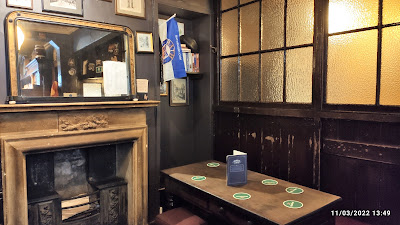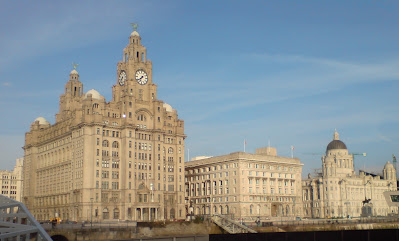It’s good at times, to stumble upon a book that strikes a real chord with one, especially as it doesn’t seem to happen that often. “Back to the Local” is such a book, even though I can’t recall which news source or information service it was that first brought this excellent publication to my attention. Published in 1949, just four years after the end of the Second World War, this little gem of a book was written at a time when the licensed trade was slowly returning to something resembling normality. After the dark days of wartime, with its bombings, deprivations, pub closures, rationing, and associated beer shortages, “Back to the Local” must have seemed like a breath of fresh air to a populace whose lives had been blighted, and in many cases deeply affected by a conflict that hadn’t long ended. “Back to the Local”, explores pubs, as they were during the 1940’s, although it must be pointed out, the pubs in question were all in London, the nation’s capital. The book was a follow-up to an earlier publication that had the simpler title of “The Local” which appeared in print during the1920’s. Unfortunately, the London premises of the book's publishers, Cassells, were destroyed in a bombing raid during the blitz, along with all stocks of the publication. Worse still, the printing plates were destroyed as well. Undeterred, the book's author Maurice Gorman, along with its illustrator, Edward Ardizzone decided to try again, with a revised version of the original book, titled "Back to the Local", published in 1949.
Maurice Gorman was an Irish journalist and broadcasting executive, whilst Edward Ardizzone, who was one of the outstanding book illustrators of the 20thcentury, was responsible for the atmospheric drawings. The subject matter was the various pubs, taverns, gin palaces, and bars that act as “locals” for a substantial proportion of London drinkers. The descriptions of the various pubs, their clientele and the staff are the real stars of the book, at a time of rambling interiors, dark wood, and dark beer.
"Back to the Local", is a fascinating nostalgic ramble around the post-war pubs of London, and whilst it isn’t a pub guide as such, it contains some very good descriptions. It covers the customs, habits and etiquette that existed in pubs at the time, along with some absorbing observations on the people who used them. It is important to remember that 80 years ago, pubs played a much more prominent role in the lives of ordinary people, than they do today.
To illustrate this, the book introduces us to the regulars, licensees and barmaids, as it explores the once familiar surroundings of the public bar, saloon bar, and lounge. It then squeezes us into the snug, and the lesser-known bottle and jug bar, where customers were able to buy beer to take away, and drink elsewhere.The pubs of the 1940’s, whilst light-years removed from those of today, were not that dissimilar to those which existed in the 1920’s, when “The Local” first appeared in print. Back then, the Local’s main enemy was not the Luftwaffe, but rather the bureaucrats, property developers, and temperance campaigners, along with those brewers keen to “modernise” their tied estates. This sadly led to the disappearance of many familiar and charismatic backstreet locals, swept away in a tide of mis-guided modernisation. Strangely, several of the concerns voiced in this book - in particular, those of pub closures, still ring true today.
Whilst the war called a halt to this process for the best part of a decade, pubs were still being rationalised when Gorman was researching his revised book, and sadly a lot of the pubs he writes about have gone the way of the great London brewers, who not only owned most of these establishments, but whose beers were sold, therein. We are talking here of brewing giants such as Barclays, Charrington’s, Truman’s, Whitbread and Watney’s, who have all vanished, along with the beers they once brewed.
The type and styles of beer these companies produced, and served in their pubs, is also worth considering, especially as all draught beers were cask conditioned and dispensed mainly by hand pump or, in a few cases by gravity, direct from the cask. Bottled beer was more expensive than draught and, given the shortage of glass during the 1940’s, was comparatively rare.Mild ale was by far the most popular draught beer and was stocked in virtually every Public Bar in the city. Bitter, described in the glossary as “yellow” in colour (think Boddingtons or Theakston’s), was more popular in the saloon, or lounge bar. Old ale, known then as “Burton”, despite having little or no connection to the famous brewing town, was a strong, and slightly sweet, brown-coloured beer. The nearest equivalent today, is Young’s Winter Warmer – assuming that is still brewed.
At that time, virtually all London pubs had a Public Bar, where the beer was a few pence a pint cheaper than in the Saloon Bar or Lounge, where the surroundings would be less basic and the décor more opulent. This was reflected in the respective clientele that used each type of bar. Although these distinctions have long vanished (sadly in my view), they remain in the memory of someone like me who started drinking during the early 1970’s, when many pubs still had some of these divisions (public and saloon bars).Maurice Gorham’s book is a lovingly compiled story of the public houses and hostelries that still remained in 1940’s London, written with the charm and old-fashioned feel of someone who seems to know every pub in town, from the most opulent gin palace, to the most basic of backstreet locals. It is clearly a lifetime's labour of love, full of great anecdotes and opinions -some of course dated, but reflecting the time in which the book was written. London itself is a city undergoing constant change, and one that is regularly re-inventing itself, but what is remarkable and indeed loveable about "Back to the Local", is just how much of it still applies today, despite being written over 80 years ago. You could still use this book as the basis for a pub crawl because many of the old and famous houses that Maurice loved so much, are still with us today.The interiors may well have changed, along with the beers and other drinks stocked (lager barely gets a mention, back in the 1940’s), and the strict social divisions of the Public and Saloon bars have also gone. Food too is much more important today, with the booming gastropub having the pork pie and pints of mild lunches, enjoyed by the pub-goers of 80 years ago. You can also get decent wine in virtually every London pub, instead of the glass of sherry, or port for the ladies. Cheery landlords, attractive barmaids, mahogany bars, dark beers, good manners, common courtesy plus a community spirit can still be found in many parts of London, if you know where to look, and online guides, such as CAMRA’s What Pub can help you here. I’m not sure exactly when and where I first came across this little book, but having read the reviews I ordered myself a copy and am pleased that I did. It is an absolute joy and although this modern edition is an obvious re-print, it remains true to the spirit of the first half of the 20th century, and is a “must have” for all connoisseurs of good pubs.







































